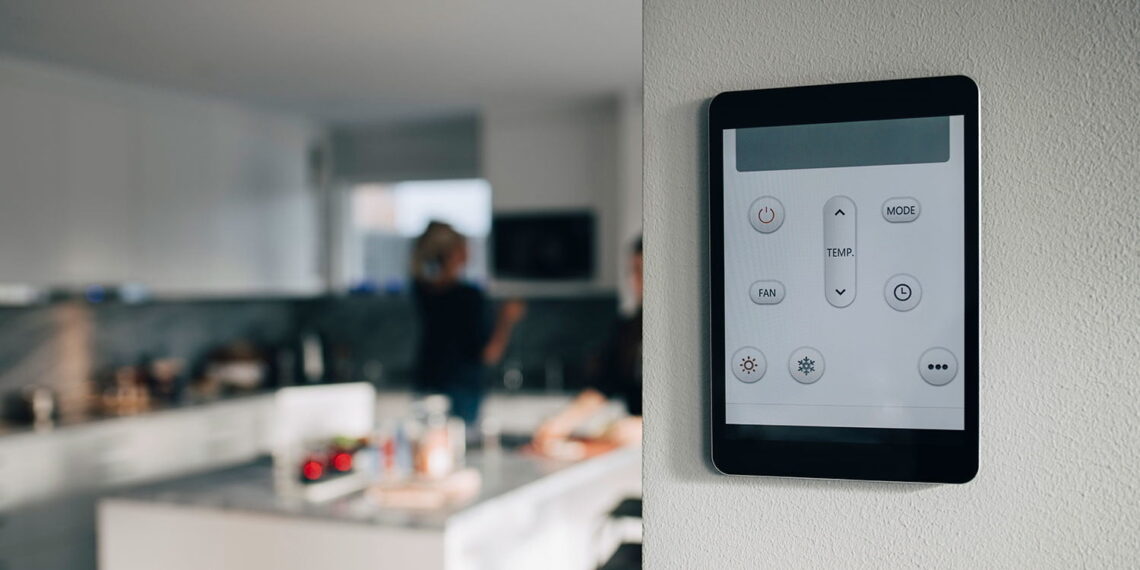Biometrics are already a security staple in commercial real estate. It’s also becoming a sought-after feature in residential properties as homeowners embrace smart home technology.
Is adopting biometrics for home security overkill? Is there a dark side to biometric data? This post sheds light on biometric security to help you determine whether it’s for you.
Also read- What Are the Best Ways to Save Energy at Home?
How Does Biometric Security Work?
In security, a biometric system identifies and authenticates individuals based on unique, specific, recognizable and verifiable data stored in the cloud, far from the source, or at the edge, close to the source. Biometric identifiers can be physical or behavioral. Physical identifiers include fingerprints, face, iris and voice. Behavioral biometrics pertain to handwriting, speech rhythms and gestures.
Specialized hardware captures and matches biometric data with the cloud or edge database. If the scanned data is on file, it will authorize the individual. The biometric system will deny the individual access if the information is unrecorded.
What Is the Most Secure Biometric Security?
Iris recognition is the most secure form of biometric security because of its accuracy. It involves a camera taking photos of your eye, enhancing the images and mapping the unique pattern of your eyeball’s colored portion surrounding the pupil. This process is challenging to cheat, so it works like a charm.
Nothing’s more accurate than iris recognition, but other biometric authentication modalities may be more suitable for specific situations. Fingerprint identification is time-tested. Sir Francis Galton published the fingerprint classification system in 1892, which is still relevant today.
Facial recognition is ideal for touchless situations. Although people’s faces change over time, this method is 99.5% accurate per the National Institute of Standards and Technology (NIST). Voice allows remote authentication when combined with speech recognition and translation. It’s super convenient and touchless, too.
Biometric Security Adoption — What to Remember
Biometric security goes hand in hand with smart locks and keyless entry systems — smart devices that only 29% of renters owned in 2022. The time is ripe for an upgrade if you belong to the other 71%.
Buying a biometric smart lock for your home is a massive decision, so you must know what you’re getting into before you pull the trigger on this purchase.
Limitations Exist
Integrating biometric identification into your smart home network can take security to new heights. However, realize that it’s not all roses.
For example, fingerprint identification requires touch, so it won’t be more hygienic than a generic door. It doesn’t support remote authentication, either. If other people need temporary access to your home, they’ll have to save their prints to your system to use your smart lock.
Moreover, biometric scanners can fail at times. They can’t read the fingerprints of 12% of the population — a number too significant to ignore. They may also not recognize you when your finger is dirty, oily, hot or cold, which can be frustrating.
No form of biometric security is 100% hackproof. Any criminals with access to your fingerprint can steal and duplicate it with the right tools. The same risk also applies to voiceprints.
It Can Be Expensive
Biometric smart locks can have hefty price tags. That’s why they’ve only been popular among affluent homeowners and multifamily developments. You may spend four figures to get one installed.
Still, these devices can come in various price points. They should become more affordable when manufacturers develop ways to produce them more efficiently. If you can forgo all the bells and whistles, get a basic model with biometric identification functionality to save money.
Data Privacy Is a Top Priority
Any device that handles your personal information exposes you to identity theft. You can take steps to shield yourself from side-channel attacks and other malicious attempts to steal your information. Still, new vulnerabilities can arise over time.
Whatever form of biometric security you choose, understand how it works and foresee how hackers can obtain your sensitive information through your smart lock.
Final Word
Regardless of the price, biometric smart locks and keyless entry systems are worthwhile. You can’t put a price on home security, so invest in it if you have the cash. When planning to build a safe room, biometric security is paramount. It’s a formidable line of defense against intruders.
Biometric identification and authentication works. Military bases, government agencies, enterprises and healthcare facilities wouldn’t use it if it didn’t. Biometric smart devices can be pricey and imperfect, but they’re practical for your home.
Author Bio
Jack Shaw is the senior lifestyle writer of Modded Magazine and a home improvement specialist. With years of personal experience performing renovations firsthand, he’s contributed his advice through publications like CAD Details, House 2 Home Organizing, Log Cabin Hub and more.









